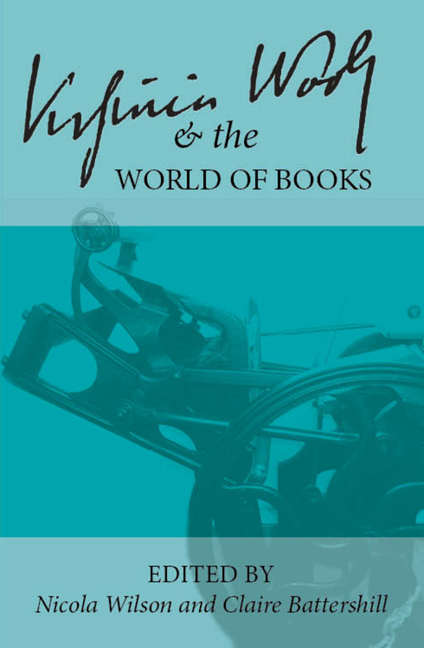 Virginia Woolf and the World of Books
Virginia Woolf and the World of Books Book contents
- Frontmatter
- Contents
- Introduction
- List of Abbreviations
- Keynote
- In the Archives
- Craftsmanship
- “Wood is a pleasant thing to think about”: William Blake and the Hand-Printed Books of the Hogarth Press
- Virginia Woolf, the Hogarth Press, and “Short Things”
- “Scarcely a Brick to Be Seen”: Breaking Boundaries in “Kew Gardens” and “The Mark on the Wall”
- Virginia Woolf's Arts and Craftsmanship
- The Hogarth Press
- Hours in A Library
- The Art of the Book
- The Art of the Narrative
- Making New Books: Creative Approaches
- The Book in the World: Woolf's Global Reception
- Editing and Teaching Woolf
- Intertextuality
- Lives in Writing
- Notes on Contributors
“Wood is a pleasant thing to think about”: William Blake and the Hand-Printed Books of the Hogarth Press
from Craftsmanship
- Frontmatter
- Contents
- Introduction
- List of Abbreviations
- Keynote
- In the Archives
- Craftsmanship
- “Wood is a pleasant thing to think about”: William Blake and the Hand-Printed Books of the Hogarth Press
- Virginia Woolf, the Hogarth Press, and “Short Things”
- “Scarcely a Brick to Be Seen”: Breaking Boundaries in “Kew Gardens” and “The Mark on the Wall”
- Virginia Woolf's Arts and Craftsmanship
- The Hogarth Press
- Hours in A Library
- The Art of the Book
- The Art of the Narrative
- Making New Books: Creative Approaches
- The Book in the World: Woolf's Global Reception
- Editing and Teaching Woolf
- Intertextuality
- Lives in Writing
- Notes on Contributors
Summary
In July 1917 Leonard and Virginia Woolf marked the beginning of the Hogarth Press by hand-printing 150 copies of Two Stories, contributing one story each. An announcement was issued in May, and printing was completed once Dora Carrington delivered her woodblocks. In October, Woolf began to devote her attention to the eighteenth-century poet and visual artist William Blake in a TLS review of Edward Thomas’ book, A Literary Pilgrim in England (1917). This simultaneous occurrence is the starting point for a discussion of Two Stories as an avant-garde artefact which drew inspiration from Blake's woodblock illustrations. I will seek to demonstrate that a Blakean resonance is an unexpected facet to Two Stories. In doing so, I am not only looking back to 1917, but to Diane Gillespie's introduction of Blake to Woolf studies in The Sisters’ Arts: The Writing and Painting of Virginia Woolf and Vanessa Bell (1988) and her “Blake and Bloomsbury: Mental Warfare” (1990).
Experts describe the early twentieth century as “a period of extraordinary vitality” in woodblock printmaking (Brett 5). This development appears in the use of woodblock illustration by luxury printing presses such as Kelmscott and the Golden Cockerel, whose designs were often highly ornate. To avoid saturating this piece with images I have not reproduced examples but I have included relevant bibliographies which provide illustrations in the works cited section. The woodblock illustrations of Two Stories were made at the Omega Workshops led by Roger Fry between 1913 and 1919, whose directorship allowed artists to “avoid the preciosity of conventional fine book production of this period” (Carey and Griffiths 49). By experimental, I mean the freedoms obtained in textual illustration by turning away from the “preciosity” exhibited by figures such as William Morris at the Kelmscott Press whose work was precious precisely because it favoured an ornate finish over the rough and exciting touch of the artists’ own hand. Comparison between woodblock illustrations made by artists at the Cockerel or Kelmscott, and those working in Fry's workshop, reveals that the striking variety in style of the Omega Workshops was not matched by wood engravings made at luxury printing houses. This suggests that artists at the Omega Workshop were not burdened by ideas of house style.
- Type
- Chapter
- Information
- Virginia Woolf and the World of BooksSelected Papers from the Twenty-seventh Annual International Conference on Virginia Woolf, pp. 40 - 49Publisher: Liverpool University PressPrint publication year: 2018
